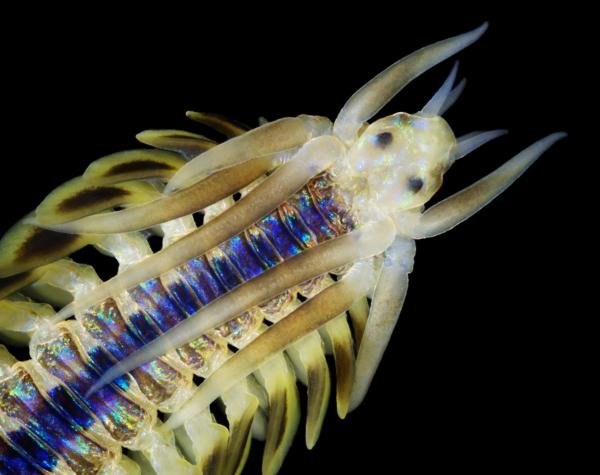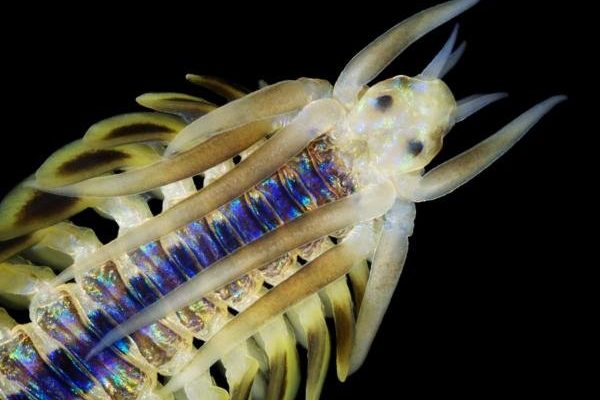
Imagine you’re out on a rocky shore, where the tide is out, and you see a bunch of wriggly worms nestled in the sand. At first glance, they all might look pretty similar, right? But lurking within that group are dozens of species, each with subtle differences that can be tough to pick up on without a trained eye. You might be wondering how to navigate this jungle of marine life, which is where understanding the intricacies of polychaete identification comes into play.
In this article, we’re diving deep into the field identification challenges of marine polychaetes. We’ll break down what makes these creatures so interesting, the best practices for identifying them, and some handy tips to make your marine exploration a little easier.
The Diversity of Marine Polychaetes
When it comes to diversity, polychaetes are in a league of their own. There are around 10,000 known species, each with unique characteristics. To put that in perspective, it’s like going to a candy shop with thousands of different flavors. Some species are brightly colored, while others are drab and camouflaged against their surroundings.
Here’s the thing: they can be broadly categorized into two groups—sedentary and errant species. Sedentary polychaetes tend to stay in one place and often create burrows or tubes, like the feather duster worm, which has gorgeous feathery tentacles. Errant polychaetes, on the other hand, are free-swimming and often more colorful, like the palolo worm that bursts forth during breeding season. Each type has its own identification markers, making it essential to know which group you’re looking at before diving into specifics.
As you explore, keep an open mind. Not all polychaetes will fit neatly into the descriptions you read. The diversity can be staggering, and sometimes what you see may even challenge existing classifications.
Physical Characteristics to Observe
Identifying polychaetes hinges on careful observation of physical traits. You need to pay attention to a few distinct features, such as body shape, color, and the presence of appendages.
* Body Shape: Polychaetes can range from flat and ribbon-like to round and segmented. This variation in body shape can often hint at their habitat and lifestyle. For instance, flat-bodied species are often adapted to life hiding in the sand, while rounded ones might be more versatile.
* Coloration: Colors can vary between species and even individuals within the same species. Some may have vibrant blues, greens, or reds, while others might blend perfectly with their background. Remember, bright colors can serve as warnings to predators or as a way to attract mates.
* Appendages: Perhaps one of the most recognizable features of polychaetes is their parapodia—these are the little fleshy appendages they use for movement and swimming. Each species has a unique arrangement of these appendages, which can help you differentiate between them.
These physical characteristics are your main tools for identification. But spotting them can be harder than it seems when you’re knee-deep in mud and water!
Understanding Behavior and Habitat
Behavior and habitat preference are key factors in identifying polychaetes. The way they move and where they choose to live can give you crucial clues about their identity.
Polychaetes can be found in a variety of habitats, from sandy bottoms to rocky reefs. Some burrow into the sediment, creating a home that’s often difficult to access. Others prefer to live on coral or rocks, which can make them easier to spot but may require a bit of acrobatics to reach.
Behavior is just as important. For example, burrowing species might be more active at night, so you might not see them during a daytime outing. Errant species, however, might be more visible during the day, swimming through the water column. Observing when and how you find them can provide additional hints.
Honestly, it’s a bit like watching a play. The habitat is the stage, and the polychaetes are the actors. Each one plays its part differently, and understanding their behavior can help you learn a lot about who they are.
Tools and Techniques for Identification
Now that you know what to look for, let’s talk about the tools and techniques that can help you identify marine polychaetes in the field. Bringing the right gear can make a world of difference in your identification efforts.
* Field Guides: A solid field guide specific to marine polychaetes is invaluable. Make sure it includes photographs and detailed descriptions. A guide can help you cross-reference your observations and confirm your findings. Look for guides that focus on your local area, as regional polychaetes can vary widely.
* Magnifying Glass or Loupe: Some details are hard to see with the naked eye. A magnifying glass or a small loupe can help you spot those tiny appendages or color patterns that make identification easier.
* Photography: Taking clear photos of what you find can aid in identification later. Try to capture the polychaete from different angles and in different light. That way, when you’re back at home, you can compare your observations to your field guide.
Using these tools can streamline the identification process. It’s all about being prepared and making the most of what you find!
Common Mistakes in Identification
Even the most experienced biologists can stumble when it comes to identifying marine polychaetes. Here are some common pitfalls to avoid:
* Overshadowing by Similar Species: Many polychaetes look remarkably alike, which can lead to confusion. Be cautious about jumping to conclusions based on first impressions. Take your time to observe all physical traits before deciding.
* Ignoring Environmental Context: Sometimes, the environment can provide key information about what species you might be seeing. For example, certain polychaetes only thrive in specific kinds of habitats. Don’t overlook the signs around you—they can lead you down the right path.
* Rushing: It’s easy to get excited and want to identify everything quickly, especially when you’ve found something interesting. But identification takes patience. Spend time observing and noting details.
Remember, identifying polychaetes is a blend of science and art. Making mistakes is part of the learning process, so don’t be too hard on yourself.
Conservation and Ethical Considerations
As you explore and identify marine polychaetes, it’s crucial to think about conservation. Many of these creatures play vital roles in their ecosystems, and understanding their populations helps protect marine biodiversity.
* Practice Responsible Observation: When studying marine life, always minimize your impact. Avoid disturbing their habitat and be careful when handling them. If you’re taking samples, do so ethically and within local regulations.
* Report Your Findings: Contributing your observations to citizen science projects can help researchers monitor polychaete populations. This kind of data is essential for conservation efforts, as it helps scientists understand shifts in marine ecosystems.
In the end, fostering a sense of stewardship over the places you explore leads to greater awareness and appreciation of marine life.
The Rewards of Identification
Successfully identifying marine polychaetes can be incredibly rewarding. Not only does it deepen your understanding of marine ecosystems, but it also enhances your connection to the natural world.
When you spot a polychaete and can name it, it feels like unlocking a hidden secret of the ocean. You’re not just observing—you’re engaging with the complex web of life that thrives beneath the surface. Whether you’re a marine biology student, a nature enthusiast, or just curious about the sea, diving into the world of polychaetes opens up a realm of fascinating discoveries.
So, the next time you’re out exploring, remember to pause, observe, and embrace the challenge that comes with identifying these captivating creatures. The ocean is full of wonders, and with a little patience and practice, you’ll find yourself unraveling its mysteries one polychaete at a time.

